- Tips for Harvesting Grapevines in the Second Year
- 1. Pruning
- 2. Training
- 3. Managing Pest and Disease
- 4. Monitoring Soil Moisture
- 5. Harvest Timing
- 6. Harvesting Techniques
- 7. Post-Harvest Care
- 8. Continuing Care
- Best Time to Harvest Grapes
- 1. Ripeness of Grapes
- 2. Acid Levels
- 3. Color of Grapes
- 4. Tannin Levels
- 5. Weather Conditions
- How to Identify the Ripeness of Grapes
- 1. Color
- 2. Texture
- 3. Taste
- 4. Seeds
- 5. Brix Level
- 6. Berry Firmness
- Preparing the Tools for Harvesting
- Harvesting Techniques for Young Grapevines
- 1. Timing
- 2. Inspection
- 3. Tools
- 4. Harvesting
- 5. Handling
- 6. Storage
- The Importance of Proper Pruning
- 1. Disease Prevention
- 2. Increased Fruit Quality
- 3. Improved Sunlight Exposure
- 4. Better Air Circulation
- 5. Training and Shaping
- Protecting Grapes from Birds and Pests
- 1. Bird Netting
- 2. Scare Tactics
- 3. Traps and Repellents
- 4. Regular Inspections
- 5. Proper Pruning and Trellising
- 6. Organic Pest Control
- Proper Handling and Storage of Harvested Grapes
- 1. Sorting and Cleaning
- 2. Drying
- 3. Storage Temperature and Humidity
- 4. Packaging
- 5. Avoid Mixing Varieties
- 6. Check for Spoilage
- 7. Freezing Grapes
- Post-Harvest Care and Maintenance for Grapevines
- 1. Pruning
- 2. Fertilizing
- 3. Weed Control
- 4. Pest and Disease Management
- 5. Training and Trellising
- 6. Irrigation
- 7. Soil Management
- 8. Winter Protection
- 9. Vineyard Cleanup
- 10. Monitoring and Maintenance
- Question-answer:
- When is the best time to harvest grapes in the second year after planting?
- How do I know when the grapes are fully ripe and ready for harvest?
- Is it necessary to prune the grapevines before harvesting in the second year?
- What are some tips for harvesting grapes in the second year after planting?
- Are there any special techniques for harvesting grapes in the second year after planting?
- Can I store the harvested grapes for a long period of time?
- What should I do with the grapevines after harvesting?
- Video: Starting a Vineyard Part 14 – Winter Pruning (2nd year vines) for Double Guyot training system.
Grapes are a popular fruit that can be grown in many different regions. If you have recently planted grape vines and are wondering when and how to harvest them, this article is for you. In the second year after planting, grapes typically begin producing fruit for the first time, and it’s important to know the best practices for harvesting to ensure the tastiest and most abundant crop.
Timing is key
One of the most important factors to consider when harvesting grapes is timing. Grapes should be harvested when they are ripe but not overripe. This can be determined by observing the color and firmness of the berries. Ripe grapes will have a deep color and a slight give when gently squeezed. It’s important to harvest grapes before they become overripe, as overripe grapes can have a negative impact on the quality of the final product.
Don’t rush the process
While it can be exciting to see your grape vines producing fruit for the first time, it’s important to exercise patience when it comes to harvesting. It may be tempting to pick the grapes as soon as they start to show color, but it’s best to wait until they are fully ripe. This will ensure that they have optimal flavor and sweetness. It’s also important to note that not all grapes on a vine will ripen at the same time. Therefore, it may be necessary to make multiple trips to the vineyard to harvest grapes at their ideal ripeness.
Proper technique
When it comes to actually harvesting the grapes, it’s important to use the proper technique to avoid damaging the vines or the fruit. Grapes should be cut from the vine using sharp and clean pruning shears or scissors. By making a clean cut, you minimize the risk of introducing disease or damaging the vine. It’s also a good idea to handle the grapes with care to avoid crushing them, as this can cause juices to leak and lead to spoilage.
In conclusion, harvesting grapes in the second year after planting is an exciting time for winegrowers and hobby gardeners alike. By timing your harvest correctly, exercising patience, and using proper harvesting techniques, you can ensure a successful and enjoyable grape harvest.
Tips for Harvesting Grapevines in the Second Year
1. Pruning
Pruning is essential for the healthy growth and productivity of grapevines. Before the second year’s harvest, prune the vines to remove any dead or weak branches, as well as to control the growth and shape of the plant. Proper pruning will help increase air circulation and sunlight exposure, leading to better fruit quality.
2. Training
Properly train the grapevines during the second year to ensure they grow in the desired shape and direction. Use trellises or wires to support the vines and guide their growth. Regularly check the growth of the vines and adjust their training as needed. This will help optimize the fruiting potential and make the harvesting process easier.
3. Managing Pest and Disease
Keep a close eye on the grapevines for any signs of pests or diseases. In the second year, the plants are still developing their defense mechanisms, so it’s important to monitor and control any issues. Regularly inspect the leaves, stems, and grapes for pests such as aphids or diseases like powdery mildew. Use appropriate methods, such as organic sprays or biological control, to protect the vines.
4. Monitoring Soil Moisture
Monitor the soil moisture levels regularly, especially during the growing season. Grapevines require consistent moisture, but overwatering can lead to poor fruit quality and disease problems. Use appropriate irrigation methods and ensure proper drainage to maintain optimal soil moisture levels for healthy grapevine growth.
5. Harvest Timing
Timing is crucial when harvesting grapes in the second year. Wait until the grapes are fully ripe before harvesting to ensure the best flavor and sugar content. Pay attention to the color changes in the grapes and perform periodic taste tests to determine their readiness. Harvest the grapes in the early morning when the temperatures are cooler to preserve the fruit’s quality and prevent spoilage.
6. Harvesting Techniques
When harvesting the grapes, handle them with care to avoid damaging the delicate fruits. Use sharp shears or scissors to cut the clusters from the vine, leaving a short stem attached to the fruit. Place the harvested grapes in shallow containers or baskets to prevent bruising or crushing. Avoid leaving the harvested grapes exposed to direct sunlight for prolonged periods, as this can affect their quality.
7. Post-Harvest Care
After harvesting, it’s important to properly store the grapes to maintain their freshness and quality. Remove any damaged or rotten grapes and gently rinse the remaining clusters with cool water. Store the grapes in a cool, dark place, such as a refrigerator, and use them within a few days for the best taste. Alternatively, you can process the grapes into juice, wine, or other products for longer-term preservation.
8. Continuing Care
After the second-year harvest, continue to care for the grapevines to prepare them for the next growing season. Prune any excess growth and monitor for signs of pests or diseases. Provide appropriate nutrients and water to support the plants’ health and growth. By maintaining proper care, you can ensure the longevity and productivity of your grapevines in the years to come.
Best Time to Harvest Grapes
Harvesting grapes at the right time is crucial to ensure optimal flavor and sweetness in the fruit. The timing of the harvest largely depends on the variety of grapes being grown and the intended use of the grapes. Here are some factors to consider when determining the best time to harvest grapes:
1. Ripeness of Grapes
The ripeness of the grapes is the most important factor in deciding when to harvest. Grapes should be fully mature and have reached their maximum sugar content before they are picked. This is typically determined by regularly checking the sugar levels in the grapes using a refractometer or by tasting the grapes.
2. Acid Levels
In addition to sugar content, the acidity levels in grapes also affect the flavor profile. Grapes with high acidity levels may taste tart and unbalanced, while grapes with low acidity levels may taste flat. It is important to find the right balance of acidity and sweetness for the desired taste profile of the final product.
3. Color of Grapes
The color of the grape skins can be a helpful indicator of ripeness. Different grape varieties change color as they ripen. Red grapes will gradually darken from a greenish hue to their final deep red or purple color. White grapes will become more translucent and turn from green to golden or yellowish. Monitoring the color change can help determine when the grapes are ready to be harvested.
4. Tannin Levels
Tannins are natural compounds found in grape skins, seeds, and stems. They contribute to the structure and complexity of the wine but can also make the grapes taste astringent if not properly ripe. It is important to consider the desired tannin levels when deciding on the harvest time, especially for winemaking purposes.
5. Weather Conditions
The weather conditions leading up to the harvest can greatly impact the quality of the grapes. Sunlight and warm temperatures promote sugar accumulation and flavor development in the grapes. However, excessive heat or extended periods of rain can dilute the flavors and negatively affect the grape quality. It is essential to monitor the weather conditions and plan the harvest accordingly.
By considering these factors and regularly monitoring the ripeness of the grapes, you can determine the best time to harvest for your specific grape variety and intended use. It is always recommended to consult with local experts or experienced growers to get specific advice for your region and grape variety.
How to Identify the Ripeness of Grapes
Harvesting grapes at the right time is crucial for achieving optimal flavor and sugar content. Here are some tips to help you identify the ripeness of your grapes:
1. Color
Observe the color of the grapes. Grapes change color as they ripen, so look for a change from green to their designated color. Different grape varieties have different colors when fully ripe, such as red, black, or golden yellow.
2. Texture
Gently squeeze a few grapes to assess their texture. Ripe grapes should feel firm, but not too hard. Avoid grapes that are mushy or have soft spots, as these might be overripe or have developed rot.
3. Taste
Taste a grape from different parts of the vine to evaluate its sweetness and flavor profile. Fully ripe grapes are generally sweeter and have a more pronounced taste. If the grape has a balanced sweetness and acidity, it is a good indicator of ripeness.
4. Seeds
Check the seeds inside a grape. When the seeds turn from green to brown and become hard, the grapes are likely ripe. However, some seedless grape varieties may not have visible seeds.
5. Brix Level
Use a refractometer or a handheld sugar testing device to measure the Brix level of the grapes. Brix is a unit of measurement that indicates the sugar content of the grapes. Generally, grapes are ready for harvest when their Brix level reaches the desired minimum for the specific grape variety.
6. Berry Firmness
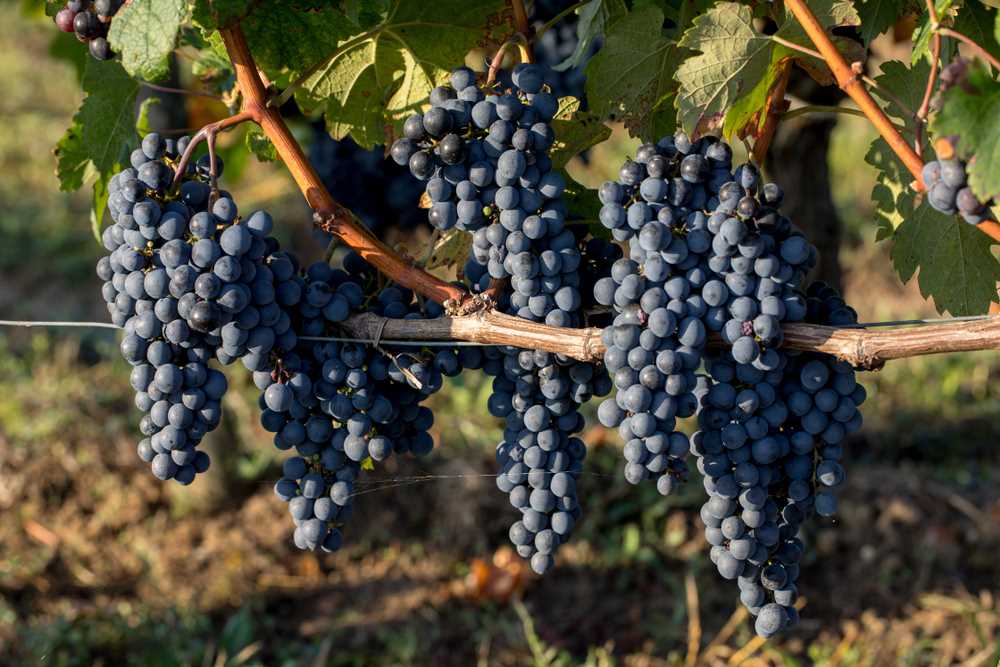
Assess the firmness of the grape berries. Ripe grapes should have a slight give when gently squeezed between your fingers. If the berries are too firm or too soft, the grapes may not be fully ripe.
Remember that the ripeness of grapes may vary depending on the grape variety, climate, and growing conditions. It is essential to monitor the grapes closely and conduct regular taste tests to determine the optimal harvesting time.
Preparing the Tools for Harvesting
Before you start harvesting grapes in the second year after planting, it is important to make sure that you have all the necessary tools ready. Having the right tools at hand will not only make the process easier but also ensure that you are able to harvest the grapes efficiently without damaging the vines.
Here is a list of tools that you will need for harvesting grapes:
- Grape Shears or Pruning Shears: These tools are essential for cutting the grape bunches from the vine. Make sure they are sharp and in good condition.
- Grape Harvesting Trays or Baskets: These containers will be used to hold the harvested grapes. Choose trays or baskets with a flat bottom to prevent the grapes from getting crushed.
- Grape Harvesting Knife: This knife is specifically designed for cutting the grape clusters from the vine. It has a curved blade that allows for clean cuts.
- Grape Cutting Board: Use a cutting board to place the grape clusters while harvesting. This will protect the grapes from getting dirty or damaged.
- Grape Gloves: It is recommended to wear gloves while harvesting grapes to protect your hands from scratches and to maintain hygiene.
- Grape Pruning Equipment: In addition to harvesting tools, it is important to have pruning equipment such as pruning shears, loppers, and a pruning saw. These tools will be used to trim the vines after harvesting.
Before you start using these tools, make sure to clean and sanitize them to prevent the spread of diseases among the grapevines. Cleaning the tools with a solution of bleach and water is generally recommended.
Having all the necessary tools ready and in good condition will help you have a smooth and successful grape harvest in the second year after planting.
Harvesting Techniques for Young Grapevines
Grapes are a popular fruit that can be harvested from grapevines after the second year of planting. While young grapevines may not produce as much fruit as more established vines, proper harvesting techniques can help maximize the yield and quality of the grapes.
1. Timing
It is important to harvest the grapes at the right time to ensure optimal ripeness. The timing of the harvest will depend on the specific grape variety and local climate conditions. Generally, grapes should be harvested when they have reached their desired sweetness and flavor. This can be determined by regularly tasting the grapes for sweetness and acidity.
2. Inspection
Prior to harvesting, it is essential to inspect the grapes for any signs of disease or damage. Remove any grapes that are moldy, shriveled, or damaged, as they can negatively impact the overall quality of the harvest. It is also important to check for any pests and remove them if present.
3. Tools
The main tool required for harvesting grapes is a pair of pruning shears or sharp scissors. These tools will allow you to easily cut the grape clusters from the vine without damaging the plant. It is important to sanitize the tools before use to prevent the spread of diseases.
4. Harvesting
When harvesting grapes from young grapevines, it is best to cut the entire grape cluster rather than individual grapes. This helps to ensure a clean cut and minimizes the risk of damaging the vines. Hold the cluster gently and cut the stem close to the base of the cluster.
5. Handling
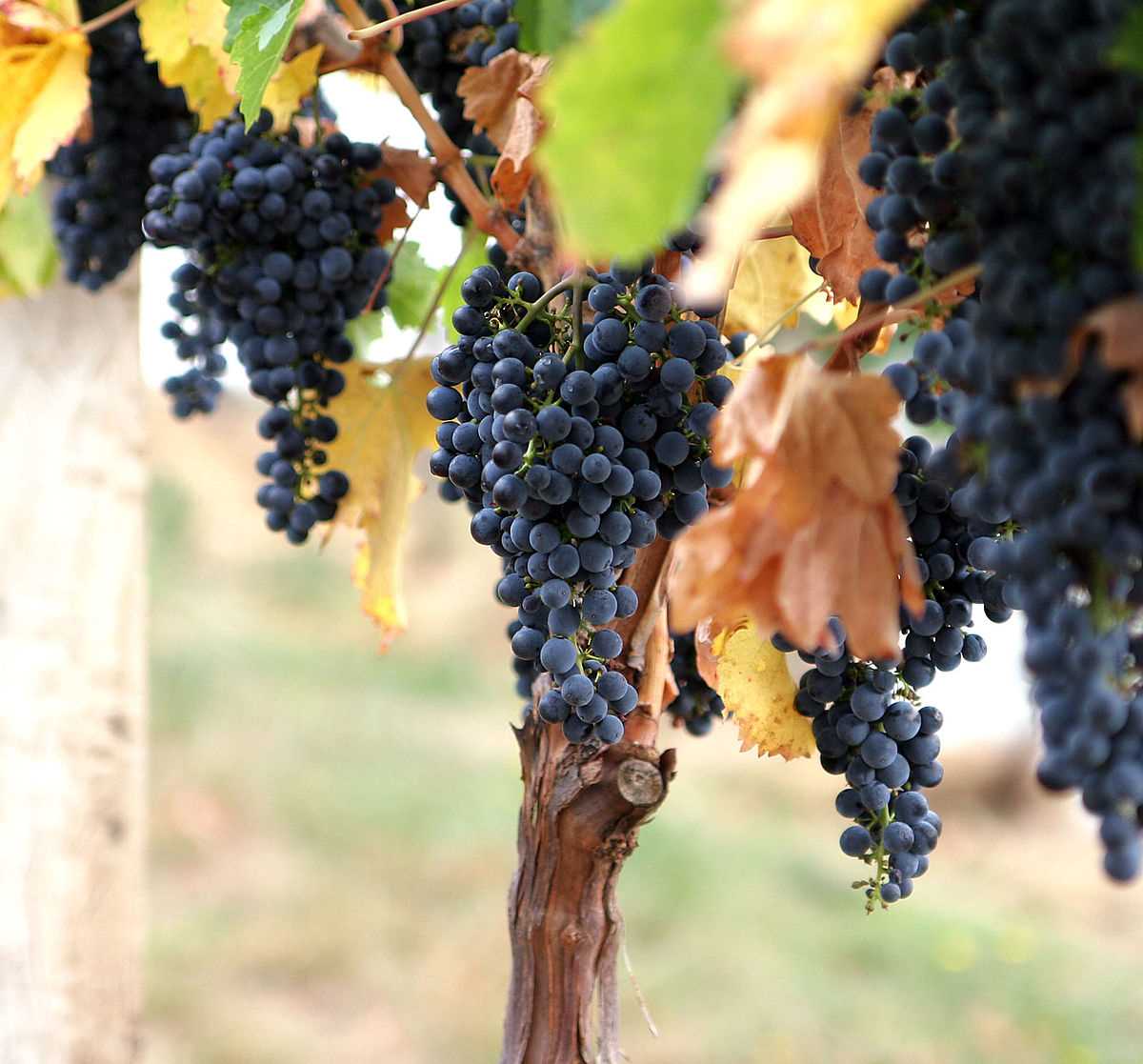
Grapes are delicate fruits that can be easily damaged during harvesting. It is important to handle the harvested grapes with care to avoid bruising or crushing them. Place the grapes gently in a clean container or basket, taking care not to stack the clusters on top of each other.
6. Storage
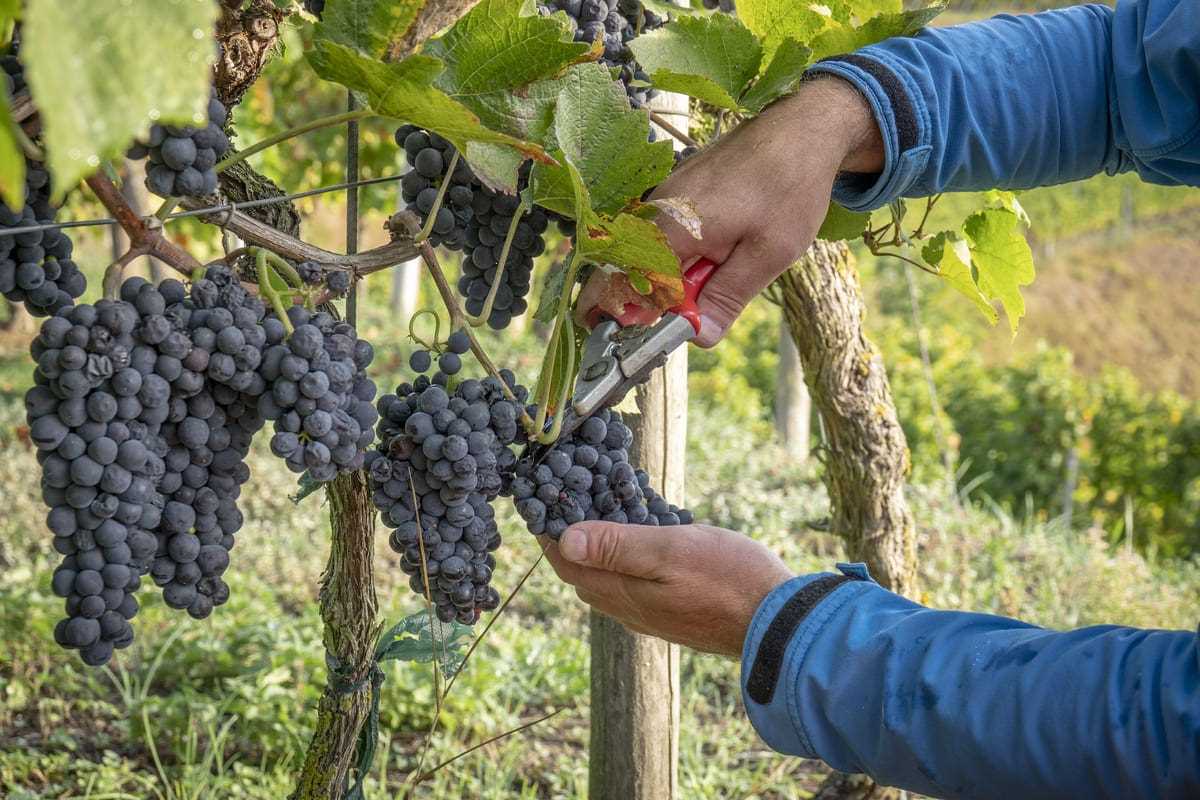
After harvesting, grapes should be stored in a cool and dry location to maintain their freshness. Avoid exposing the grapes to direct sunlight or extreme temperatures, as this can accelerate spoilage. It is best to consume the grapes within a few days of harvest for optimal flavor and quality.
By following these harvesting techniques, you can ensure a successful and bountiful harvest from your young grapevines. Enjoy the fruits of your labor and savor the delicious flavors of freshly harvested grapes!
The Importance of Proper Pruning
Proper pruning is essential for the healthy growth and development of grapevines. It not only helps to maintain the desired shape and size of the vine but also promotes better fruit production. Here are some reasons why proper pruning is important:
1. Disease Prevention
Pruning helps to remove dead, diseased, or damaged wood from the vine. This reduces the risk of fungal infections and other diseases that can affect the health of the vine. Pruning also improves air circulation and sunlight penetration, which further helps to prevent the spread of diseases.
2. Increased Fruit Quality
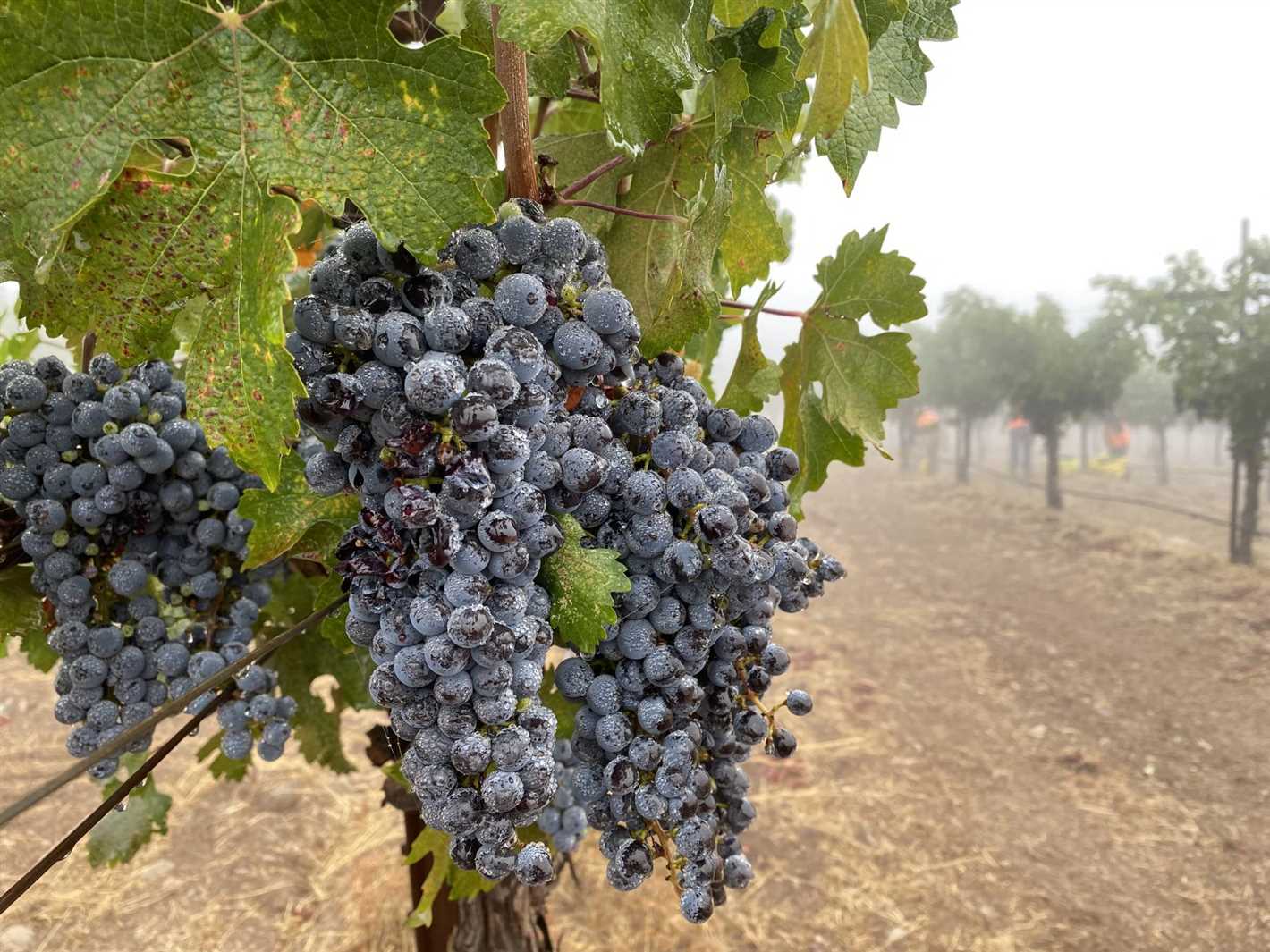
By removing excess foliage and thinning out the grape clusters, pruning allows the vine to direct more energy towards the remaining fruit. This results in larger, juicier grapes with better flavor and color.
3. Improved Sunlight Exposure
Proper pruning ensures that the grape clusters receive adequate sunlight exposure. Sunlight is crucial for grape ripening, as it helps in the accumulation of sugars and the development of desirable flavors. Pruning removes any foliage that may be shading the clusters, allowing them to receive maximum sunlight.
4. Better Air Circulation
Pruning helps to open up the canopy of the vine, allowing for better airflow. Improved air circulation reduces the chances of fungal infections and other diseases. It also helps to dry out the foliage after rain or dew, which can further prevent the growth of pathogens.
5. Training and Shaping
Pruning is an essential part of training and shaping the vine. By guiding the growth of the vine through pruning, growers can create a strong structure that supports the weight of the fruit and facilitates easy management and harvesting.
Overall, proper pruning plays a crucial role in maintaining the health and productivity of grapevines. It helps to prevent diseases, improve fruit quality, and create a well-structured vine that is easier to manage. By investing time and effort into pruning, growers can ensure a successful harvest in the second year and beyond.
Protecting Grapes from Birds and Pests
Grapes are a favorite food for birds and pests, and it’s important to protect your grape harvest from their damage. Here are some tips to help keep birds and pests away from your grapes:
1. Bird Netting
One effective way to protect your grapes from birds is to cover them with bird netting. Bird netting is a lightweight mesh that can be draped over the grape vines to create a barrier that prevents birds from reaching the fruit. Make sure to secure the netting tightly to prevent birds from getting tangled in it.
2. Scare Tactics
Installing scare devices can help deter birds and pests from your grapes. You can hang shiny reflective objects such as CDs or aluminum foil strips in your grape vines to create flashing lights that birds find intimidating. Additionally, you can use scarecrows or inflatable predators near your grape vines to create the illusion of a threat.
3. Traps and Repellents
Using traps and repellents can also be effective in protecting your grapes from pests. There are various types of traps available that can catch pests like slugs, snails, and beetles. You can also use natural repellents such as garlic or chili pepper sprays to discourage pests from feasting on your grapes.
4. Regular Inspections
Regularly inspect your grape vines for any signs of bird or pest damage. Look out for missing or damaged fruit, as well as holes or bite marks on the grapes. Early detection can help you take immediate action to prevent further damage.
5. Proper Pruning and Trellising
Proper pruning and trellising techniques can help reduce bird and pest damage. Pruning your grape vines to create an open canopy can make it more difficult for birds to perch and access the fruit. Trellising the vines can also help keep the grapes off the ground, making them less accessible to pests.
6. Organic Pest Control
If you prefer organic methods, there are several natural pest control options available. You can introduce beneficial insects such as ladybugs or lacewings to your grape vineyard to help control pests. Additionally, using organic pesticides or homemade remedies made from natural ingredients can help deter pests without harming the environment.
By implementing these proactive measures, you can protect your grape harvest from birds and pests, ensuring you can enjoy the fruits of your labor when it comes time to harvest.
Proper Handling and Storage of Harvested Grapes
After harvesting your grapes, it is important to handle and store them properly to maintain their quality and flavor. Here are some tips to help you with the process:
1. Sorting and Cleaning
Start by sorting the grapes to remove any damaged or rotten ones. Discard any grapes that show signs of mold, pests, or disease. Rinse the grapes gently under cool running water to remove dirt, debris, and any residual pesticide or fungicide spray.
2. Drying
Allow the grapes to dry thoroughly before storing them. You can spread them out on a clean towel or use a salad spinner to remove excess water. Avoid drying them in direct sunlight, as this can cause the grapes to shrivel or lose flavor.
3. Storage Temperature and Humidity
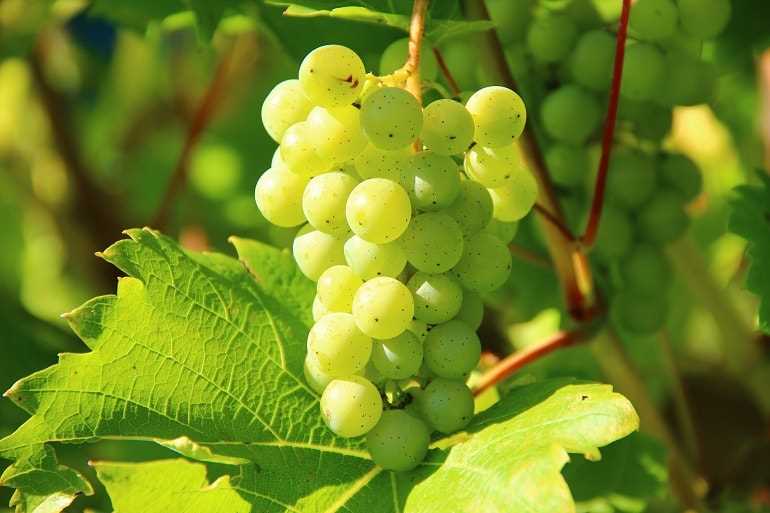
Grapes should be stored in a cool and humid environment to maintain their freshness. The ideal temperature for storing grapes is around 32-35°F (0-2°C), with a humidity level of 90-95%. You can store them in the refrigerator or in a cool cellar.
4. Packaging
Place the dried grapes in a single layer in a shallow container or a food-grade plastic bag. Avoid overcrowding the grapes, as this can cause them to bruise and spoil faster. Make sure to seal the container tightly to prevent moisture loss or the entry of contaminants.
5. Avoid Mixing Varieties
If you have harvested different grape varieties, it is best to store them separately. Each variety may have different storage requirements, and storing them together can lead to flavor transfer or uneven ripening.
6. Check for Spoilage
Periodically check the stored grapes for any signs of spoilage. Discard any grapes that have become mushy, have a strong odor, or show signs of mold or rot. Removing spoiled grapes will prevent the spread of spoilage to other grapes.
7. Freezing Grapes
If you have an excess of grapes, you can freeze them for later use. Simply remove the stems, wash and dry the grapes, and place them in a freezer-safe container or bag. Frozen grapes can be used in smoothies, desserts, or enjoyed as a refreshing snack.
By following these tips, you can ensure that your harvested grapes remain fresh, flavorful, and enjoyable for an extended period.
Post-Harvest Care and Maintenance for Grapevines
1. Pruning
After harvesting grapes, it’s important to prune the grapevines to maintain their health and promote new growth for the following year. Pruning should be done during the dormant season, typically in late winter or early spring. Remove any dead or diseased wood, as well as any weak or overcrowded branches. Pruning helps improve the vine’s overall structure and ensures optimal fruit production.
2. Fertilizing
Proper fertilization is crucial for grapevines’ growth and productivity. After harvest, apply a balanced fertilizer to replenish the soil’s nutrients. Choose a fertilizer specifically formulated for grapes or use a general-purpose fertilizer with equal amounts of nitrogen, phosphorus, and potassium (NPK). Follow the manufacturer’s instructions for application rates.
3. Weed Control
Maintaining a weed-free vineyard is essential for preventing competition between grapevines and weeds for water, nutrients, and sunlight. After harvest, remove any weeds or grass around the grapevines. Mulching can also help control weeds and retain moisture in the soil. Apply a layer of organic mulch around the base of the plant, making sure to leave space around the trunk to avoid rotting.
4. Pest and Disease Management
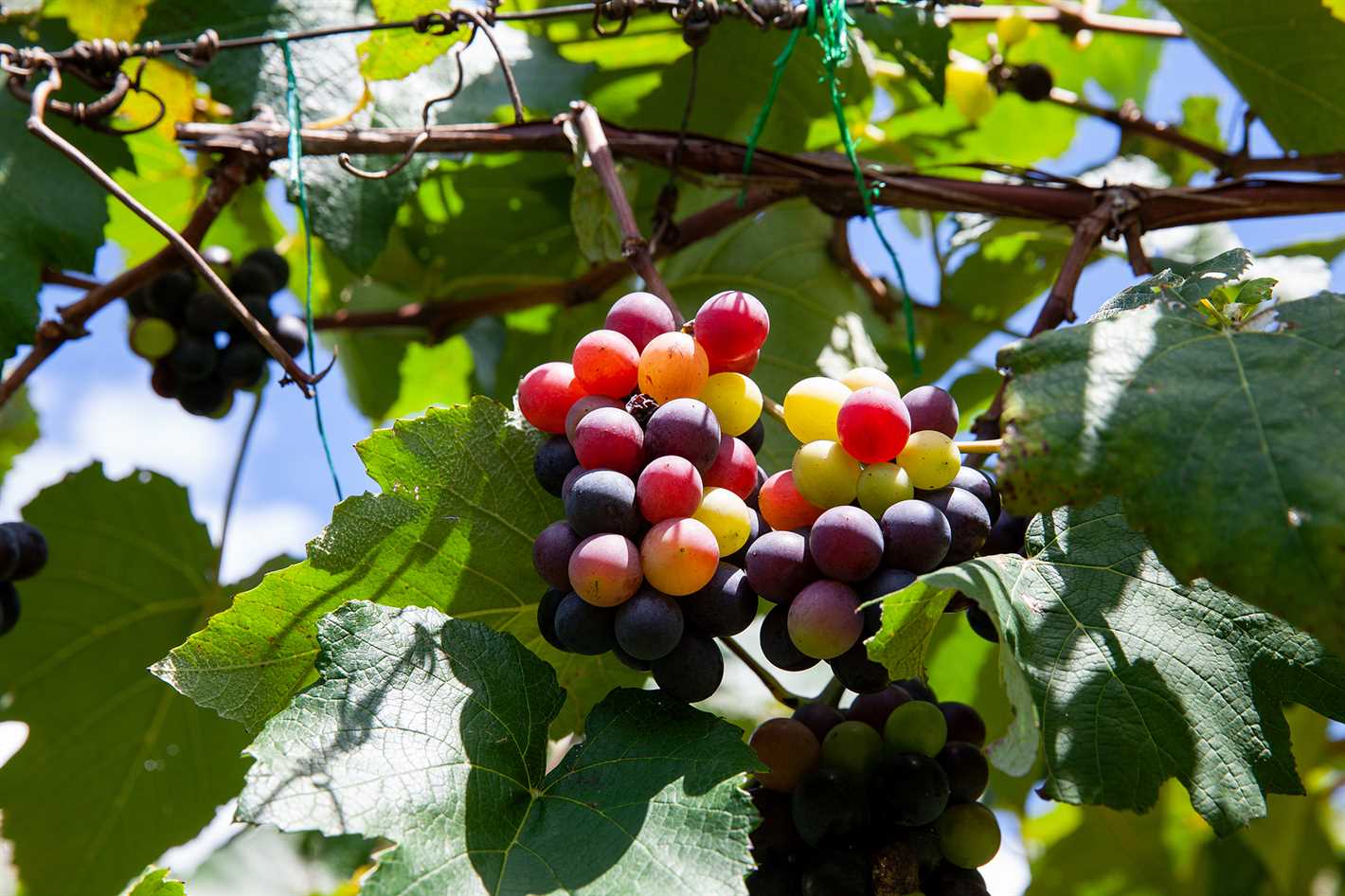
Grapevines are susceptible to various pests and diseases, which can significantly impact their health and productivity. It’s important to regularly inspect the vineyard for signs of pests or diseases and take appropriate measures to control them. Use organic or chemical-based insecticides and fungicides as needed, following the instructions on the labels. Additionally, practicing good vineyard hygiene, such as removing fallen leaves and pruning debris, can help reduce disease pressure.
5. Training and Trellising
Training and trellising grapevines is an ongoing process that helps maintain their structure, supports fruiting, and facilitates canopy management. After harvesting, check the trellis system and make any necessary repairs. Remove any old or broken wires and replace them as needed. Prune and train the new growth to the trellis wires, ensuring proper spacing and support for the vine.
6. Irrigation
Proper irrigation is vital for grapevines’ health and productivity. After harvest, continue to monitor soil moisture levels and adjust irrigation accordingly. In general, grapevines require regular but controlled watering. Avoid overwatering, as it can lead to shallow root growth and increased disease pressure. Consider installing a drip irrigation system for efficient water delivery to the vines.
7. Soil Management
Maintaining healthy soil is essential for the overall health of grapevines. After harvest, assess the soil’s nutrient levels and pH. If necessary, apply soil amendments such as lime or sulfur to adjust the pH. Conduct soil tests to determine the nutrient deficiencies and apply appropriate fertilizers or organic amendments to replenish the soil’s nutrients. Regularly monitor soil moisture levels and ensure proper drainage.
8. Winter Protection
As winter approaches, it’s important to protect grapevines from frost and cold temperatures. After harvest, remove leaves and debris from around the base of the vines. Apply a layer of mulch around the base of the plants to insulate the roots and protect them from freezing temperatures. If necessary, consider using row covers, frost blankets, or other protective measures to shield the vines from severe cold.
9. Vineyard Cleanup
After harvest, it’s essential to clean up the vineyard to maintain a clean and healthy environment for the grapevines. Remove any fallen leaves, pruned branches, and other debris from the vineyard floor. Proper sanitation helps reduce the risk of pests and diseases and promotes the overall health of the grapevines.
10. Monitoring and Maintenance
Regular monitoring and maintenance throughout the year are essential for the success of grapevines. Keep a close eye on the vines for any signs of pests, diseases, or nutrient deficiencies. Address any issues promptly to prevent further damage. Regularly inspect the trellis system, irrigation system, and overall vineyard infrastructure for any repairs or improvements needed.
| Tasks | Timing |
|---|---|
| Pruning | Late winter or early spring |
| Fertilizing | After harvest |
| Weed Control | After harvest |
| Pest and Disease Management | Regularly throughout the year |
| Training and Trellising | After harvest |
| Irrigation | Throughout the year |
| Soil Management | After harvest |
| Winter Protection | Before winter |
| Vineyard Cleanup | After harvest |
| Monitoring and Maintenance | Throughout the year |
Question-answer:
When is the best time to harvest grapes in the second year after planting?
The best time to harvest grapes in the second year after planting is when the grapes are fully ripe. This usually occurs in late summer or early fall, depending on the variety of grape and the climate in your region.
How do I know when the grapes are fully ripe and ready for harvest?
You can determine if the grapes are fully ripe by looking at their color and taste. The grapes should have a uniform color, with no green or unripe berries remaining. You can also taste a few grapes to ensure they are sweet and flavorful.
Is it necessary to prune the grapevines before harvesting in the second year?
Yes, it is necessary to prune the grapevines before harvesting in the second year. Pruning helps to control the growth of the vine and promote fruit production. It is best to prune the vines in late winter or early spring, before the buds start to break.
What are some tips for harvesting grapes in the second year after planting?
Some tips for harvesting grapes in the second year include using sharp pruning shears to cut the grape clusters from the vine, being careful not to damage the grapes or the vine. It is also important to handle the grapes gently to prevent bruising. Additionally, it is helpful to have a clean harvesting container to place the grapes in.
Are there any special techniques for harvesting grapes in the second year after planting?
There are no special techniques for harvesting grapes in the second year after planting, but it is important to be gentle and careful when handling the grapes to avoid damaging them. It is also helpful to harvest the grapes in the morning when they are cool and at their peak freshness.
Can I store the harvested grapes for a long period of time?
It is not recommended to store harvested grapes for a long period of time, as they are best enjoyed fresh. However, if you need to store them, you can keep them in the refrigerator for up to a week. It is important to handle them gently and store them in a breathable container to prevent moisture buildup.
What should I do with the grapevines after harvesting?
After harvesting the grapes, you can prune the grapevines again to remove any dead or damaged wood. This will help promote healthy growth for the following year. You can also consider fertilizing the grapevines to provide them with the nutrients they need to thrive.







